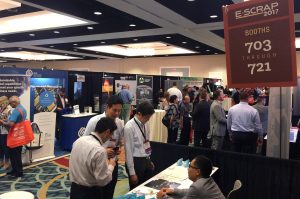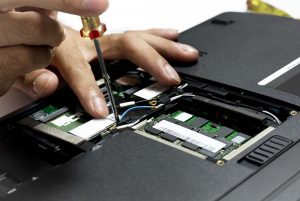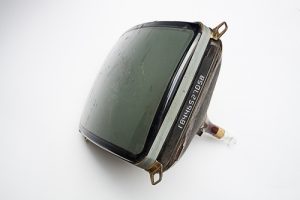 Future funding levels for the U.S. EPA are one step closer to certainty after lawmakers in the U.S. House of Representatives approved government spending outlined in a dozen agency-specific budget bills this month.
Future funding levels for the U.S. EPA are one step closer to certainty after lawmakers in the U.S. House of Representatives approved government spending outlined in a dozen agency-specific budget bills this month.

E-Scrap News magazine is the premier trade journal for electronics recycling and refurbishment experts. It offers updates on the latest equipment and technology, details trends in electronics recycling legislation, highlights the work of innovative processors, and covers all the other critical industry news.
Sign up for our free weekly e-newsletters to receive the latest news directly.
 Future funding levels for the U.S. EPA are one step closer to certainty after lawmakers in the U.S. House of Representatives approved government spending outlined in a dozen agency-specific budget bills this month.
Future funding levels for the U.S. EPA are one step closer to certainty after lawmakers in the U.S. House of Representatives approved government spending outlined in a dozen agency-specific budget bills this month.
 Last Tuesday and Wednesday, dozens of industry experts took to the stage in Orlando to discuss the trends and challenges shaping electronics recovery right now. Here are some of the most compelling pieces of information we took away from those talks.
Last Tuesday and Wednesday, dozens of industry experts took to the stage in Orlando to discuss the trends and challenges shaping electronics recovery right now. Here are some of the most compelling pieces of information we took away from those talks.

Bob McCarthy
There was a clear thread woven through E-Scrap 2017: Reuse and refurbishment activities are dramatically increasing in the end-of-life electronics management industry. One executive at the center of the shift outlined steps to move into device repair successfully.
Around 1,200 electronics recovery professionals gathered last week for North America’s largest sector event. Our photo slideshow offers a taste of the networking, education and industry connection that took place over three busy days.
American Document Destruction of Sparks, Nev.; Data Guardian of Portage, Mich.; File Pro of Corpus Christi, Texas; Hill’s Shred Express of Ocala, Fla.; Stevens & Stevens BRM of Greenville, S.C.; The DocShop (Vic) Pty Ltd. of Traralgon, Victoria, Australia; The Information Management Group of Wellington, New Zealand; and WesTex Document Inc. of Lubbock, Texas have either achieved or renewed their NAID certifications for physical destruction of hard drives.
Visit our archive to view previous editions of the scorecard.
 For the e-scrap industry, business as usual may not cut it in the future. To help, this week’s E-Scrap Conference is providing information and connections that allow processors and others to stay on top of changes in the fast-evolving sector.
For the e-scrap industry, business as usual may not cut it in the future. To help, this week’s E-Scrap Conference is providing information and connections that allow processors and others to stay on top of changes in the fast-evolving sector.
 Bolstering domestic markets is a logical way to reduce exports, and that concept is behind a just-announced program that’s tied to an e-scrap certification.
Bolstering domestic markets is a logical way to reduce exports, and that concept is behind a just-announced program that’s tied to an e-scrap certification.
 Lithium-ion batteries will come to play a far larger role in the scrap electronics stream in the future, and an expert says companies will need to adapt to the challenges and opportunities these materials present. Continue Reading
Lithium-ion batteries will come to play a far larger role in the scrap electronics stream in the future, and an expert says companies will need to adapt to the challenges and opportunities these materials present. Continue Reading
 There was some level of OEM influence in an e-scrap company’s decision to send tens of millions of pounds of CRT glass to the ill-fated Closed Loop Refining and Recovery, statements from Kuusakoski and Sony show.
There was some level of OEM influence in an e-scrap company’s decision to send tens of millions of pounds of CRT glass to the ill-fated Closed Loop Refining and Recovery, statements from Kuusakoski and Sony show.

A firm releases a list of common problems auditors come across in e-scrap processing facilities, and Apple boosts its repair prices.
